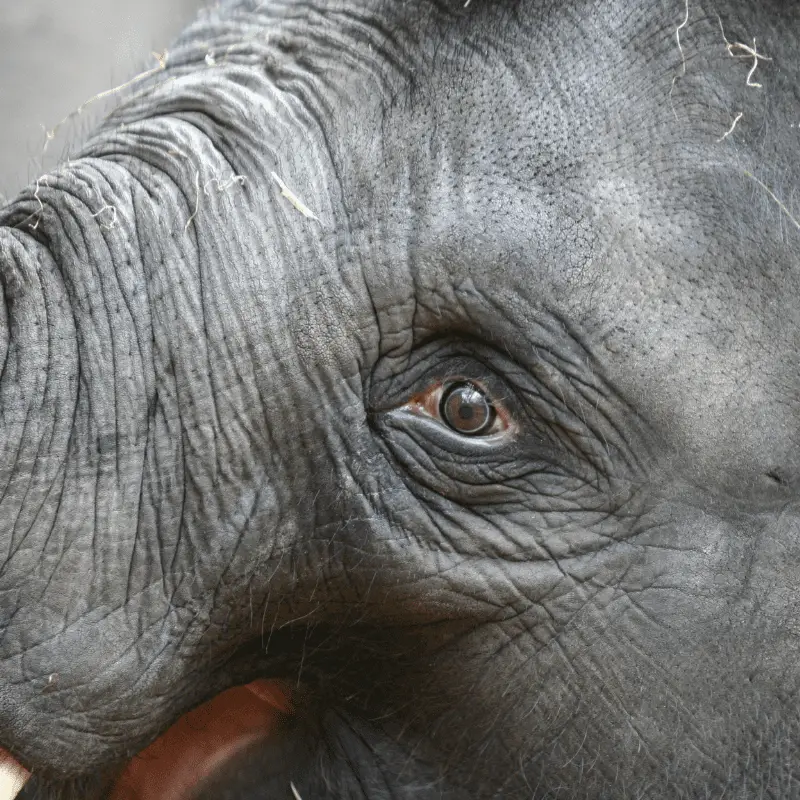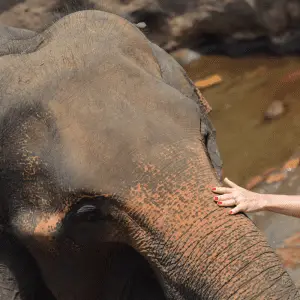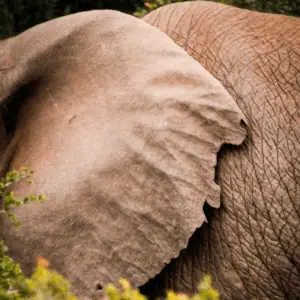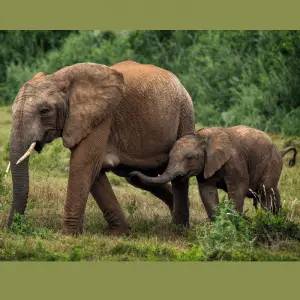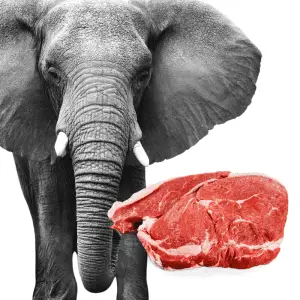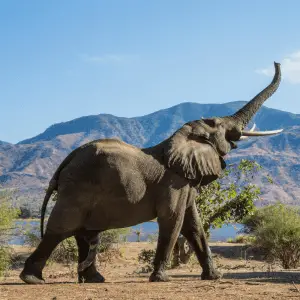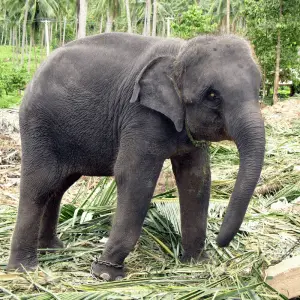Every living animal sees the world differently. While some animals, like us, see a colourful world, others have a limited coloured vision. Even though most animals in the world have a kind of proportional set of eyes, elephants are primarily different. Compared to their massive size, the eyes of the elephants are very small. So, do elephants have good eyesight?
Elephants do not have good eyesight. Even though the elephants depend on their eyesight to navigate the forests, their vision is not that great. The small size of their eyes and their position limit the sight of an elephant even further.
We now know that the eyesight of an elephant isn’t that great. Let’s go into this in more detail and learn about the elephant’s vision.
About The Elephants Vision
Elephants lack in the field of depth perception, and their vision is limited. Most elephants are short-sighted and cannot see anything located beyond 20 feet of distance.
Elephants are born blind. In their early childhood, they rely primarily on other senses to navigate. Then over the years, the vision of the elephants tends to improve significantly.
| Animal | Born Blind | Later Gets Vision |
|---|---|---|
| Ostrich | No | N/A |
| Mouse | Yes | Yes |
| Deer | No | N/A |
| Rhino | No | N/A |
| Cat | Yes | Yes |
| Dog | Yes | Yes |
| Hippo | No | N/A |
| Duck | No | N/A |
| Dolphin | No | N/A |
| Rat | Yes | Yes |
| Horse | No | N/A |
| Rabbit | Yes | Yes |
| Cow | No | N/A |
| Sheep | No | N/A |
| Elephant | Yes | Yes |
Elephants’ sight is for locating food and keeping an eye on their children and other herd members.
Elephants tend to have good eyesight in dull light. However, as the light gets brighter, the visual acuity of an elephant gets reduced considerably.
Elephants have selective observation and only visually pick up and pay attention to past known visual experiences.
It has been suggested that elephants can see the silhouettes of any object pretty well. But if the thing is placed against any solid background, the elephants will find it challenging to pick it out.
Elephants eat for 16 to 18 hours daily to fulfil their nutrient requirement. That means they always stay up throughout the night. This could be why their vision is roughly the same in dull light and daylight.
Elephants rarely have 2 hours of sleep at night. That might be why these animals can see better in limited light exposure.
Elephant’s Eye Size
Even though these animals have massive bodies, their eyes are considered small in comparison. The average size of an elephant’s eye is about 3.8 cm. The height of African elephants ranges between 8.2 ft to 13 ft, but the size of the eyes is not bigger than 3.8 cm. Compared to the human eyes, roughly 2.5 cm, elephants are tiny in their body ratio.
| Animal | Body Size | Eye Size |
|---|---|---|
| Elephant | Up to 13 feet | 1.5 inches |
| Whale | Up to 98 feet | 3 inches |
| Rhino | 10 feet | 0.8 inches |
| Horse | Up to 8 feet | 2 inches |
| Cat | Up to 3 feet | 0.4 inches |
| Hippo | Up to 10 feet | 0.9 inches |
| Dog | Up to 4 feet | 0.7 inches |
Eye Location
The eyes of an elephant are located on either side of its head. This location enables the elephants to have good peripheral vision.
The visual range of the elephants is 180 degrees. It takes significant energy for the elephants to have 180-degree vision, but they can see what is behind them by pressing the ear close to their body.
Eye Colour
The most common colour among elephants is light brown, dark brown-grey and honey.
Apart from the typical colours, other possible rarer eye colours are gold, yellow-green and blue-grey.
In sporadic cases, elephants can have two different coloured eyes.
Some elephants have a white ring around their iris. This white ring is considered similar to the age ring of humans. These rings are known as arcus lipoids and do not affect the vision of the elephants in any way. Did you see the arcus lipoids in the very first image of this article? The white line is apparent to see.
Can Elephants See Colour?
Elephants are colour-blind. Elephants have the same type of visual pigments in their eyes as colour-blind humans. Even though these animals can see yellows and blues, elephants cannot differentiate between green and red.
Elephants have arrhythmic vision. It is a kind of vision that gets changes with time. For example, elephants respond more to violet and blue light at night. That is why these animals can see better in dull and limited light.
How many eyelids has an elephant got?
Even though elephants only have two eyes, these animals have three eyelids quite interestingly. Unlike most other mammals, elephants have regular lower and upper eyelids and a third eyelid that moves across their eye.
The three eyelids help protect elephants’ eyes while they bathe, feed, and cool down.
Eyelashes
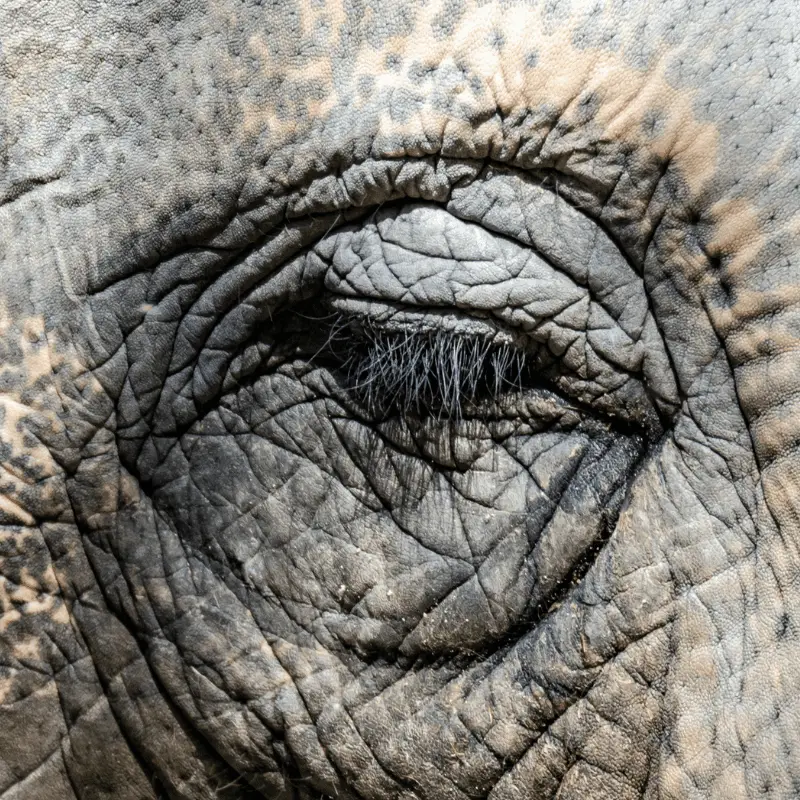
The eyelashes of an elephant are incredibly long. These long eyelashes help the elephants keep foreign particles out of their eyes, like sand, dust, and debris.
Animal Colour Vision
| Animal | Colour Vision | Limited Colours |
|---|---|---|
| Humans | Yes | |
| Primates | Yes | |
| Cats | Yes | |
| Echinoderms | Yes | |
| Dogs | Yes | |
| Birds | Yes | |
| Arachnids | Yes | |
| Horses | Yes | |
| Pigs | Yes | |
| Sheep | Yes | |
| Amphibians | Yes | |
| Cow | Yes | |
| Rabbits | Yes | |
| Mice | Yes | |
| Rats | Yes | |
| Elephants | Yes | |
| Rhinos | Yes | |
| Dolphins | Yes |
Why are elephants’ eyes so small?
The other sense of an elephant is far more critical than their eyesight, such as the sense of smell, and they can hear up to six miles away using their big ears to heighten the sounds. These senses have taken an evolutionary ladder over the eyesight of an elephant.
Do elephants have tear ducts?
Tear ducts are found in the eyes of humans and most other mammals. These ducts help drain the tears out of our eyes to flush out dirt and other foreign particles. Let’s find out! As elephants are giant mammals, you may also expect them to have your tear ducks.
Elephants do not have tear ducts. Instead, elephants have something known as the nictitating membrane. This nictitating membrane is also known as the third eyelid of an elephant. It is mainly responsible for producing water layers on their eyes. That means this nictitating membrane functions like a tear duct. It moves vertically over the eye and protects against infection and any debris.
All in all, elephants have small eyes and poor vision. Unlike most mammals, these animals tend to see better at night even though vision is not their strongest suit. Elephants are colour-blind, but they have more substantial hearing and smelling senses. These senses make up for their visual deficiency.

